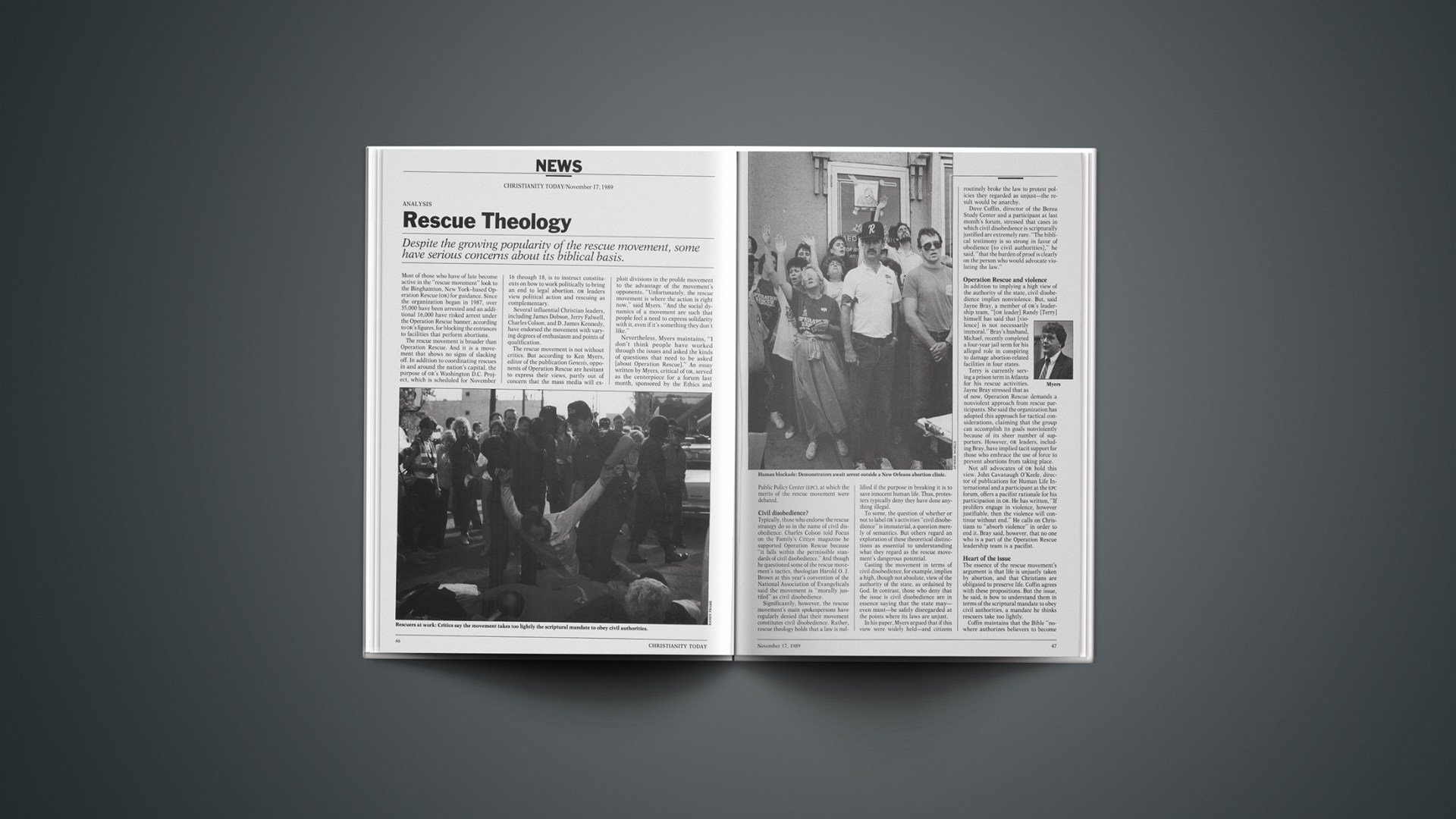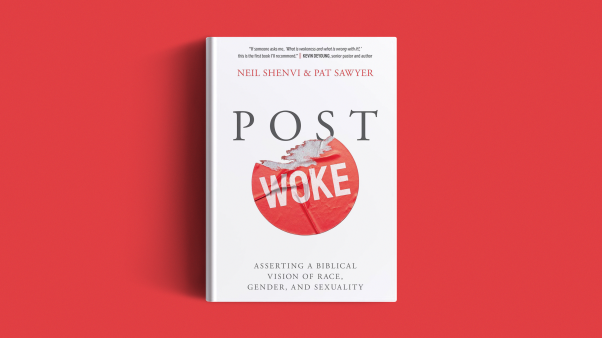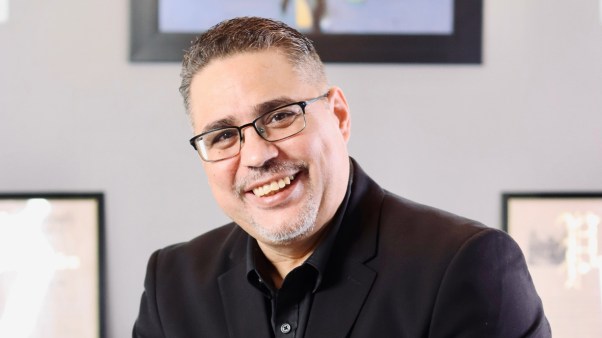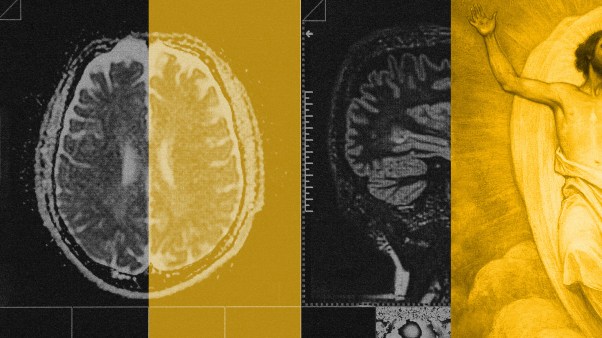While Satanism has been thrust into the limelight, experts are calling for careful analysis and reaction.
From Geraldo to James Dobson, Satan worship has captured far-reaching public attention. But how real and how widespread is Satanism in America?
Sensational reports continue to garner headlines, and rumors of satanic cult activities have alarmed whole towns and prompted officials to call communitywide meetings to lay fears to rest. But some experts continue to dismiss many of them as exaggeration and rumor. J. Gordon Melton, director of the Institute for the Study of Religion, said last spring that of the hundreds of cases sent to his institute during the past four years, only 20 have been substantiated as satanic activity.
“The numbers are really small and have always been small,” he said. “As far as is known there are only three organized groups in the country that publicly worship Satan,” though there may be many small local groups led by troubled individuals, he said. Other cult/occult researchers have also called into question the veracity of testimonies by several well-publicized figures claiming to be ex-Satanists.
Nevertheless, a growing list of law-enforcement officials, mental-health professionals, and Christian leaders now takes seriously bizarre stories of ritual abuse, animal sacrifice, sexual perversions, cannibalism, and even murder—all in the name of Satan.
Reliable figures are impossible to find, according to cult/occult watchers, due to the secrecy, individuality, and eclectic practices of Satanists. Most experts, however, believe the number of those involved in Satanism is indeed rising. At the same time, they attribute much of the recent media exposure to increased recognition by authorities of the signs of occult-related crime and practice.
Jack Roper, a researcher with the Milwaukee-based Christian Apologetics Research and Information Service (CARIS), has studied occult practices as a Christian for more than 10 years. As a member of the Midwest Gang Investigators Association, Roper is frequently called in to interpret the markings of occult-related crime.
Graffiti, animal mutilation, and ritual trappings such as candles and bones were for years unrecognized or ignored by law officers, Roper said. But as the number of cases grew and investigators compared notes, the extent of the problem became more apparent.
“There is still a lot of denial that [satanic practice] exists, but that comes from ignorance, just not being able to recognize it,” said Robert Simandl, a youth officer with the Chicago Police Department and a recognized expert in occult-related crime.
Diverse Beliefs
Christian researchers identify four categories of involvement in Satanism:
• The experimentalist, or dabbler, who may be fascinated with occult books and items, horror movies, fantasy role-playing games, or “heavy metal” rock music with violent or satanic themes. Researchers believe millions of individual Americans dabble in the occult without ever becoming part of a recognized satanic group.
• The self-styled Satanist. As an experimentalist becomes more deeply involved, he or she may borrow many different elements to set up a unique system of belief and practice.
• The religious Satanist. These serious practitioners, such as Anton Le Vey, author of The Satanic Bible, deny any criminal activity and often seek to present their beliefs as a legitimate religion.
• The intergenerational Satanist. These secretive believers pass the “family religion” from one generation to another, and may even be members of Christian churches.
There is also wide diversity within satanic beliefs, experts say. Some Satanists may believe in a personal source of evil—the Devil—while others may view evil as an extension of man’s baser nature. In fact, some satanic groups may downplay the supernatural to avoid scaring potential members away.
Other occult groups, such as witches, prefer to distinguish themselves from Satanists, according to Roper, claiming to practice only “white magic” for good ends. “But the common denominator is magic,” he said, “and the source of the power is the same.” In addition, so-called white covens often serve as fronts for satanic groups, used for recruiting and screening new members.
Though teenagers are most often the object of concern, persons of all ages are involved, Roper said. Drawn by a desire for power, drugs, sex, or recognition, they may be loners, viewed as weird outsiders by their peers, or they may be very charismatic individuals, who can manipulate people to their advantage.
Crime And Protection
Law-enforcement officials face some restrictions in their pursuit of occult cases. As a religion, Satanism is protected by the First Amendment, Simandl said. But serious crimes often accompany Satan worship, including vandalism, animal mutilation, child abuse, pornography, prostitution, drug abuse, theft, and arson. Authorities have recently formed alliances such as the Cult Crime Impact Network to share information.
Mental-health professionals are also joining the list of those taking Satanism seriously. Earlier this fall, Hartgrove Hospital in Chicago launched a treatment program for teenagers involved in satanic cults, one of the first of its kind in the country. Other hospitals are considering similar programs in response to the serious mental and behavioral problems that often accompany satanic involvement.
During the past few years, as child abuse has risen to public consciousness, so too have stories of ritualistic abuse. The shocking nature of many reports caused therapists to discount them, said Mary Kay Ryan, a psychiatric nurse who specializes in counseling victims of sexual and ritual abuse.
Satanic involvement sometimes emerges in cases of multiple personalities, Ryan said. “The memories of such horrible abuse are extremely frightening,” she said. “They don’t want those memories retrieved, and it’s only after many hours of therapy that they begin to emerge.”
Experts agree that those involved in satanic worship need professional help. Because of the diverse nature of satanic practices, individuals must be treated on a case-by-case basis. That requires a tremendous amount of knowledge of the field, Ryan said, and it emphasizes the need for networking and support groups for those who deal with such cases.
Cult/occult watchers believe recent media attention has accomplished a positive first step by raising awareness of the problem. But they also fear that sensationalized coverage and overreaction will mask the true seriousness of satanic practices.
“It’s not a fad anymore,” Roper said. “It will be a social problem of the ‘90s. I don’t see it going away.”
By Ken Sidey.
Keeping an Eye on the Cults
An estimated 60 million Americans are involved in cults, and another 60 million dabble in the occult, according to the late Walter Martin, author of Kingdom of the Cults, a seminal textbook in the field. Yet, in spite of the growing number of people involved in non-Christian beliefs, ministries that focus their work on understanding and evangelizing cult and occult groups still feel like distant cousins to the evangelical church.
A September gathering in Rockford, Illinois, provided a rare opportunity for cult/occult watchers from across the country to gather face to face, trade information, share strategies, and encourage one another in what they describe as often lonely work. “Taking a stand against doctrinal errors is seldom popular,” said Kevin Johnson, president of the Institute for Christian Apologetics, cosponsor of the Rockford Conference on Discernment and Evangelism. Churches and individuals often shun what they see as the confrontational nature of such a ministry, or view it as a specialty for a few, Johnson said.
However, he does see the relationship beginning to improve as more Christians are themselves confronted by other religions. And the number of cult/occult ministries has grown in recent years. The Cult Research Directory, published by Cornerstone Press in Chicago, now lists more than 400 individuals and organizations.
More than 200 people attended workshops at the three-day conference, which examined such topics as non-Christian religions, Scientology, Mormonism, New Age thinking, channeling, Satanism, astrology, “fringe” churches, and even cult and occult computer networks. Though several sessions were open to the general public, most conferees were involved in cult/occult ministry, and they welcomed the chance to compare notes.
Bob Passantino, director of Answers in Action in Costa Mesa, California, said one of the greatest needs among such ministries is “integrity in research,” both in handling the material of other Christians and in approaching other religions fairly and accurately.
Another need, said Kurt Van Gorden of Jude 3 Missions, is to put research to use in evangelism. “There’s a real danger of just accumulating information with no real concern for reaching these people [in non-Christian religions] for Christ,” he said.
In spite of the growing list of cult/occult ministries, much more work needs to be done, said R. Gordon Lewis, professor of theology and philosophy at Denver Seminary and president of Evangelical Ministries to New Religions, also a sponsor of the conference. Lewis, who offered one of the first challenges to the religious nature of transcendental meditation in 1975, said the world view of the New Age movement is transforming American culture. In only 20 years, he said, it has moved from the fringes into the mainstream of society.
He pointed with concern to the effects of a non-Christian world view in India, where he taught for a number of years. “In 200 years of modern mission there, only 3 to 4 percent of the population is Christian. Prevention,” he said, “is better than cure.”
“We need to respond to a [non-Christian] world view wherever it is found—in business, in the media, in education,” Lewis said. “Every Christian has a part to play.”










